The Midlands town likened to Switzerland
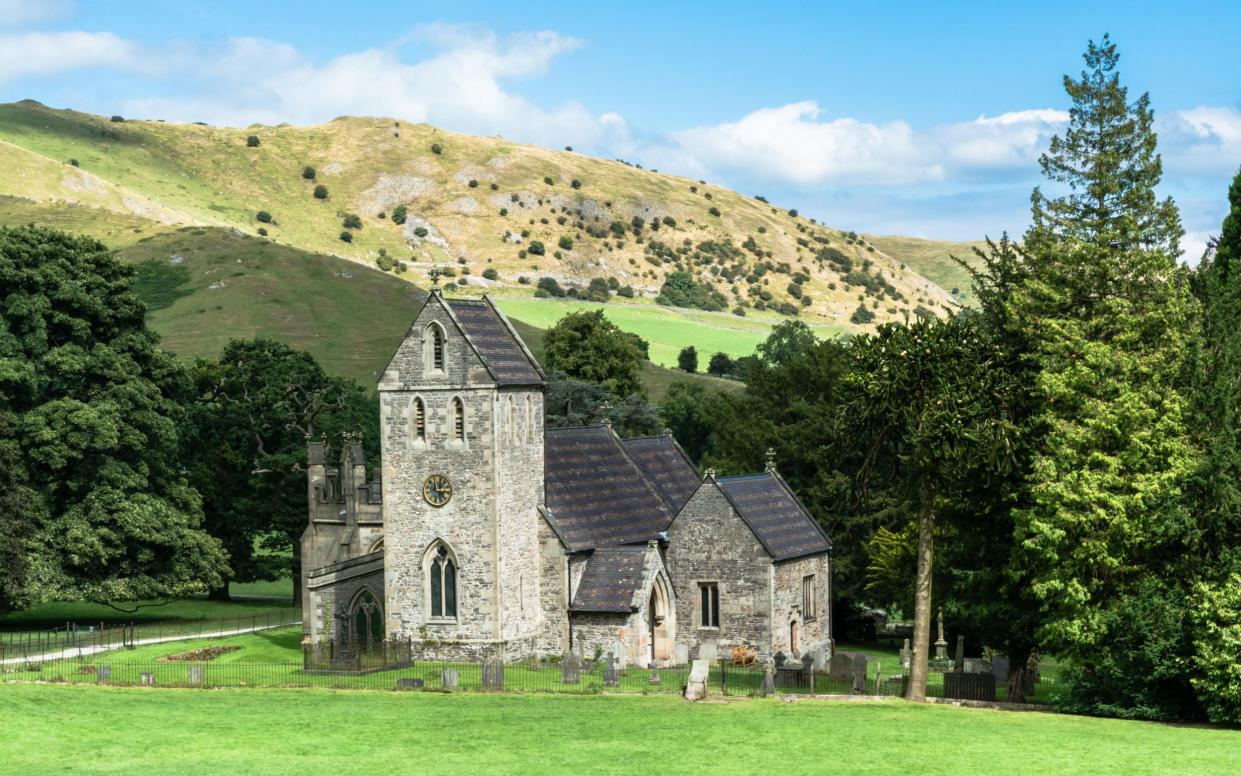
I was struggling to see it. Maybe if I squinted? There was certainly an arresting glory about Thorpe Cloud that belied the knoll’s modest 287m (942ft). But did it, and the surrounding landscape, really look like Switzerland? “Maybe to someone who’s only seen photos…?” offered walking guide Austin Knott. “It does look like a beheaded Toblerone.” Ah, maybe that was it.
Austin and I were in the tiny village of Ilam (pronounced “eye-lamb”), so-called “Switzerland of the Midlands”. We’d bagged a window table in the National Trust café and were eating scones and staring out across parkland to the lop-topped mini-Matterhorn of Thorpe Cloud and neighbouring Bunster Hill. This is the southern gateway to the Peak District, an area of the White Peak where green pastures roll, sheep nibble, rivers are wont to vanish into the limestone and there is, so they say, something Swiss about it.
Ilam actually has a namesake not in the Alps, but the Himalayas. The municipality of Ilam spreads across Nepal’s terai and tea-cloaked foothills; there, in the local Limbu language, the name translates as “twisted road”. Driving to meet Austin in Staffordshire’s Ilam, squeezing between hedges, clattering over cattle grids and praying not to meet any oncoming traffic, that felt quite apt here too. However, this Ilam’s name is probably related to its rivers, possibly from the Old Norse “Hylum”, meaning “at the deep places”, a reference to the Manifold and Hamps re-emerging from underground.
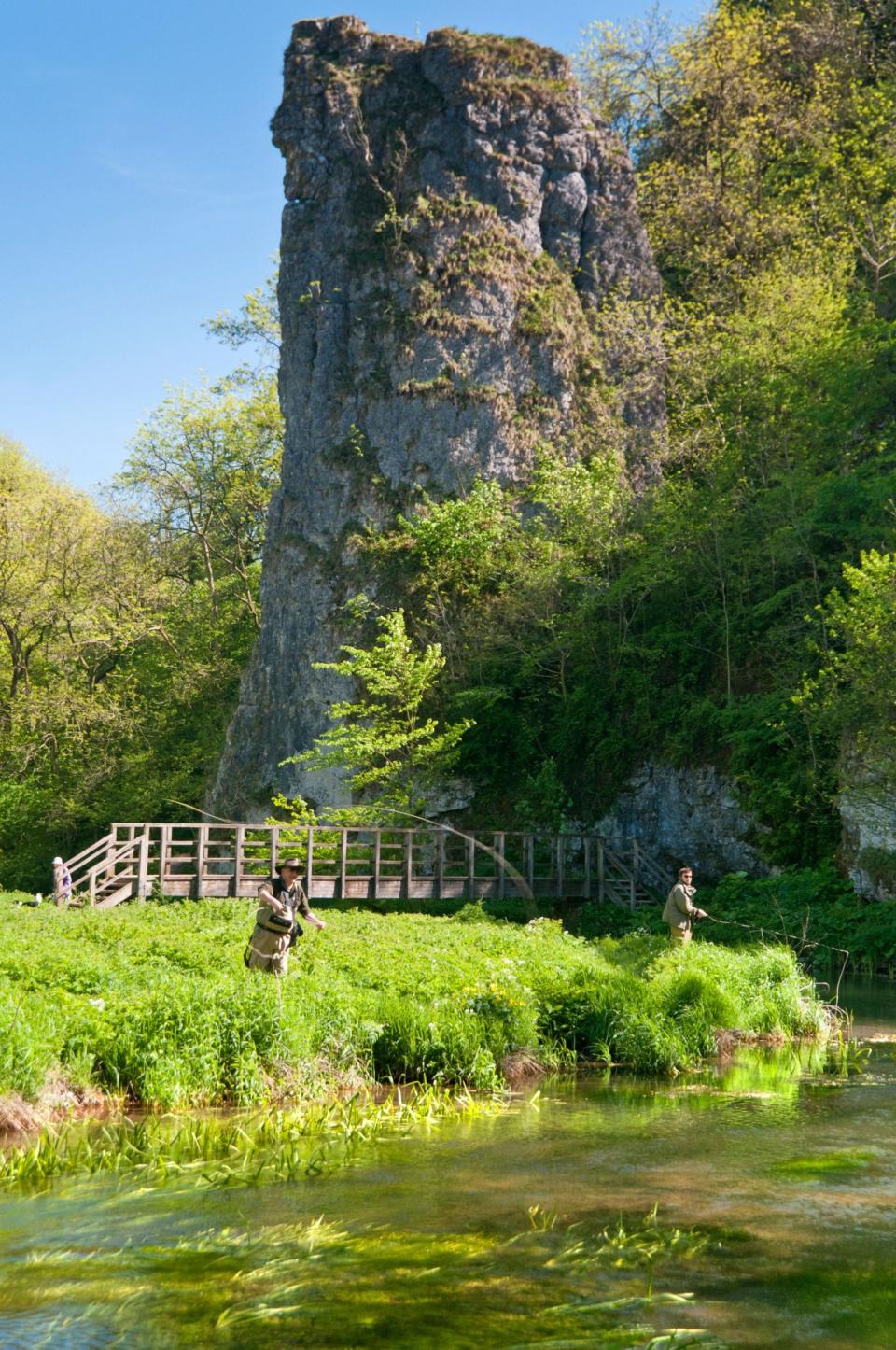
Ilam-Moor Lane may have been twisty, but it was the best approach to the village. Coming from the south, you appreciate the effect Jesse Watts-Russell was going for almost 200 years ago: a sprinkle of chalets set amid grassy meadows, hills rising all around – the perfect Alpine-esque scene.
Watts-Russell inherited the estate at Ilam, via his wife, in 1816 and set about erecting an opulent new hall in the then-fashionable Gothic Revival style. He also had the notion of building an Alpine-style model estate village. The architect Sir George Gilbert Scott was brought in to tear down the vernacular Peaks cottages and replace them with a school and houses featuring steeply pitched roofs, decorative gables, half-timbered trellising and overhanging eaves. They were made from local materials but totally unlike anything else in the Peaks.
Ilam Hall, though still striking, is a shadow of its former opulence – two-thirds of it was demolished in the 1930s. It’s now in the care of the National Trust, and is let out to the Youth Hostel Association. The estate houses remain intact, a quirky anomaly, maybe more toy-town than Alpine. I noticed one had a “sold” sign outside, and was dying to know what the going rate might be. These properties were first built for blacksmiths and gamekeepers but are now Grade II listed, within a conservation area, within a national park.
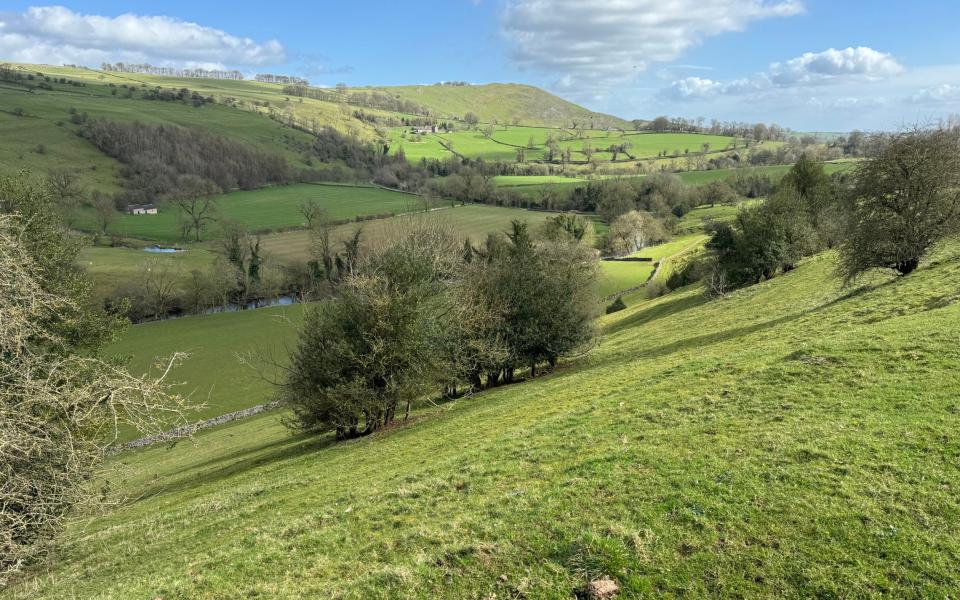
“Ilam and Dovedale – they’re a honeypot,” Austin told me. And long have been. This beautiful bowl of countryside was already on the British “grand tour” circuit when Watts-Russell was redesigning things. Later, workers flocked in from the industrial Potteries for riverside picnics and fresh air. This hasn’t changed. “People come for Dovedale’s stepping stones; they walk there and then walk back,” Austin said. “Since Covid it’s been rammed.”
Which is one reason why he was taking me on a walk in the opposite direction. Like Switzerland, the area around Ilam – and beyond – is excellent hiking country. The forthcoming Staffordshire Moorlands Walking Festival (April 26 to May 6 2024) offers 40 guided excursions across the region, including jaunts near Ilam. And Ilam itself even has its own pilgrimage trail, in the footsteps of St Bertram, a Saxon prince-turned-hermit who lived here in the eighth century and whose tomb lies in the village’s Holy Cross Church (it allegedly has healing powers).
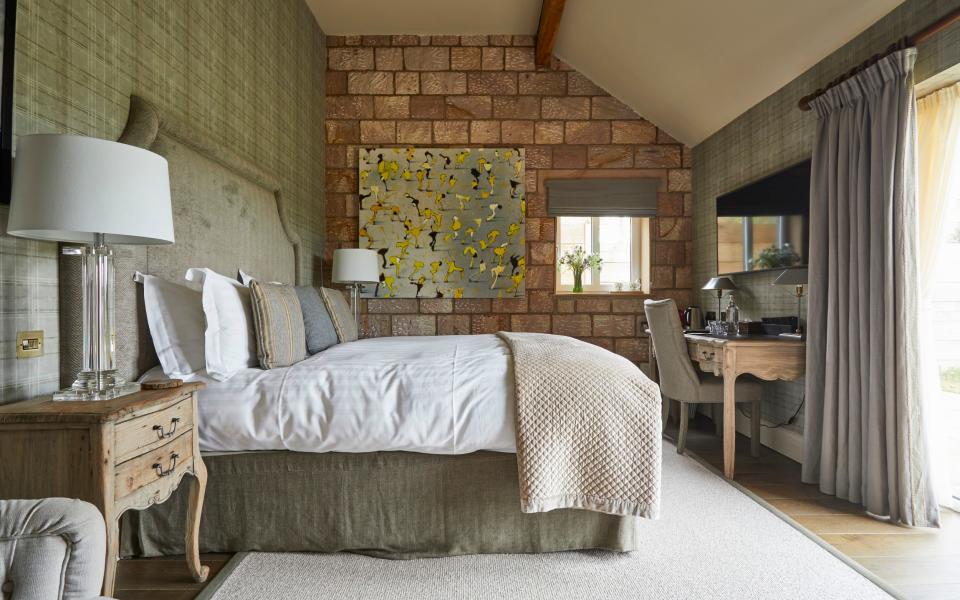
However, today Austin led me along the Paradise Walk from the Hall, and headed out along the Manifold, enjoying its happy spring chuntering – later in the year, when water levels drop, it will disappear completely. We struck out across luminous-green slopes to the ruins of Throwley Old Hall, the county’s only surviving medieval manor, sitting forgotten in a farmyard, and continued towards Beeston Tor, a craggy limestone cliff, slit with a cave in which Bertram purportedly lived. There are stepping stones out this way too, but no crowds around them. In all, we made a wonderful eight-mile loop and saw only two other people.
There were children mock-sword-fighting in the grounds when we arrived back at Ilam Hall. It looked like a lot of fun, sleeping in the hostel, having the run of these grand remains, from the old stair turret and tower to the Italian terrace’s loggia and parapet. However, I didn’t stay. More tempting was the Duncombe Arms in Ellastone, a few miles south. It was named third-best pub in the country in the 2023 Visit England awards. Plus I was keen to continue my Swiss theme.
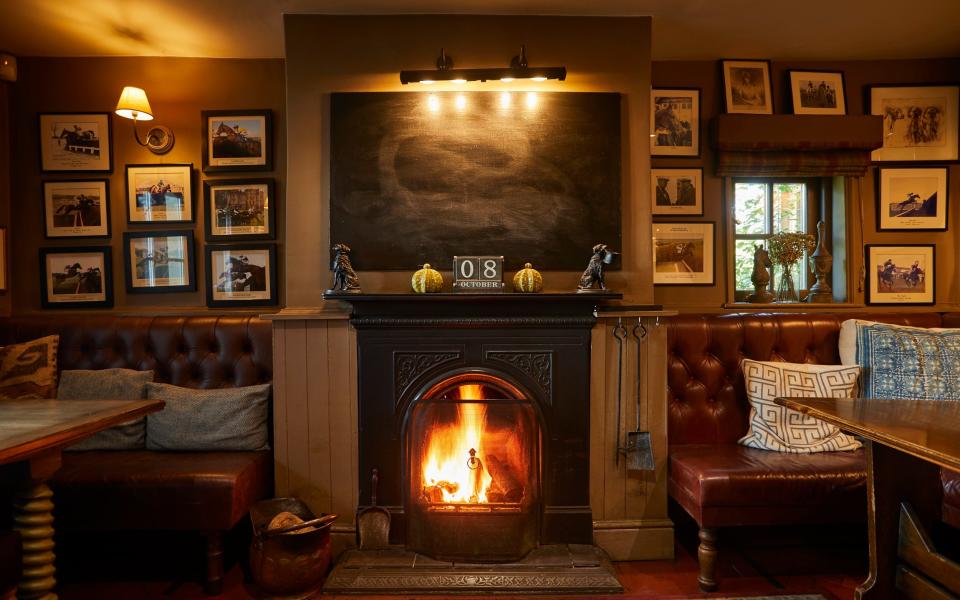
The Duncombe has smart rooms on site, but I was staying in its Garden Cottage, a cosy, honey-stone holiday home, tucked into the grounds of nearby Wootton Hall Estate. In 1766 Swiss philosopher Jean-Jacques Rousseau went into self-imposed exile in the manor that once stood here. He wrote much of his seminal Confessions in a cave in the grounds and would frequently go for walks, often to Dovedale, the Manifold Valley and Ilam – maybe it reminded him of home?
I walked from the cottage into Wootton’s gardens, following the stream up the narrow wooded cleft to what’s now called Rousseau’s Bridge. The philosopher was a keen botanist; he may have helped design the original gardens here and he certainly enjoyed the views across them to the Weaver Hills. I looked at them now. Not especially Swiss. But none the worse for that.
Essentials
Sarah was hosted at the Duncombe Arms (01335 324275; duncombearms.co.uk), which has B&B doubles from £195pn; Garden Cottage (sleeping six) costs from £300pn, minimum three nights.
Ilam Park is open daily (01335 350503; nationaltrust.org.uk).
Staffordshire Moorlands Walking Festival runs April 26-May 6; most walks are free (staffsmoorlandswalkingfestival.co.uk).
Austin Knott runs Walk the Moorlands and posts details of forthcoming walks on Eventbrite.


